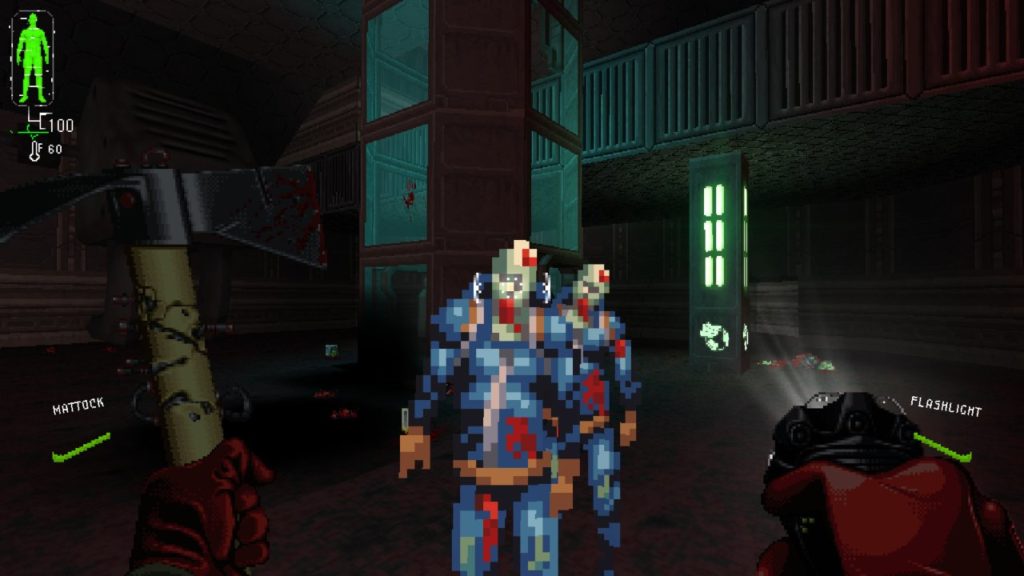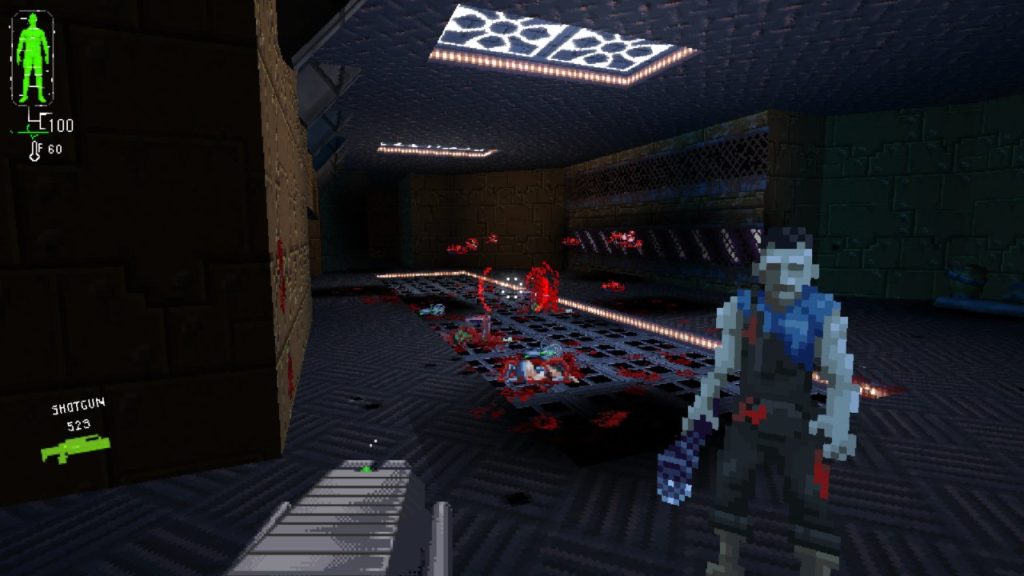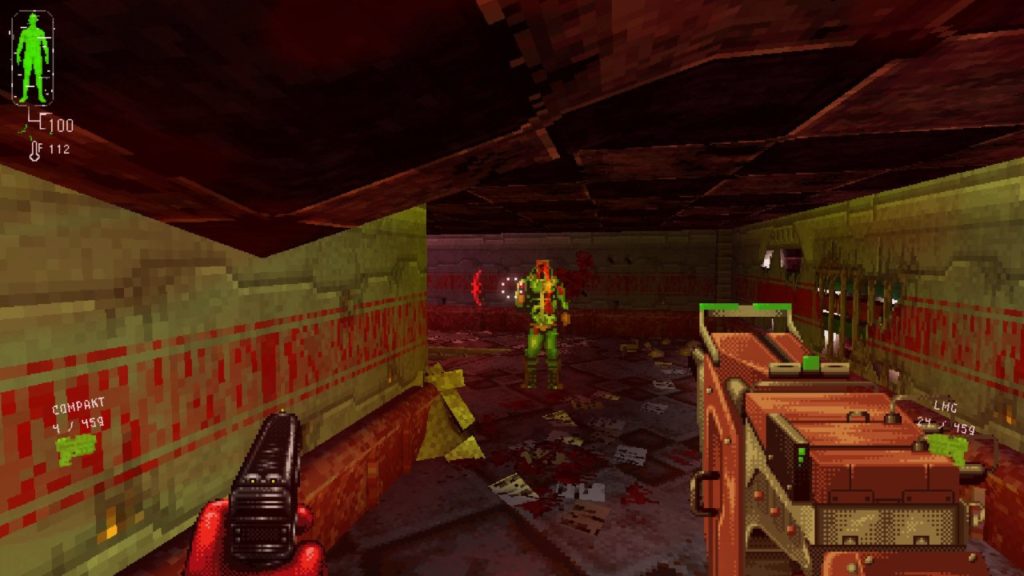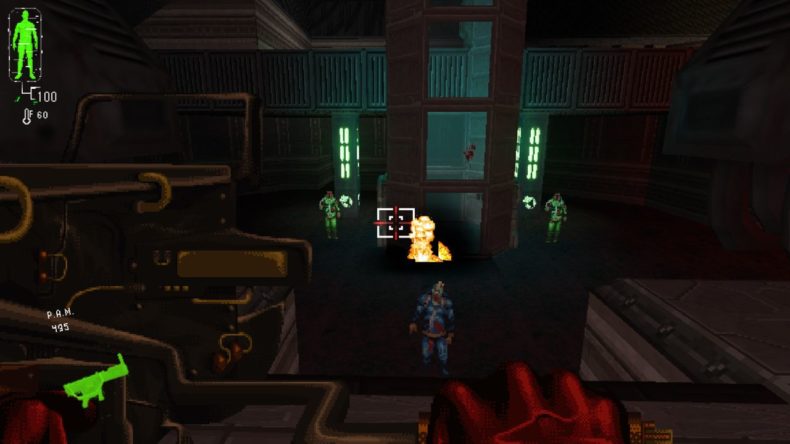Hyperviolent, from Terminist Arcade and Fulqrum Publishing, is one of those games that you feel like you’ve played before. It’s about 70% old school Doom and 30% old school System Shock, and your mileage will vary depending on how much you crave that very specific experience.
It’s a boomer shooter set on a deep space mining colony that has been overrun by demons and zombies after the workers messed with a strange alien substance. Answering a distress call, your wandering mercenary blunders into the station and just starts smashing skulls left and right. There’s a colour-coded key card system, and a little pop-up inventory, and most of your time will be spent exploring blood-soaked corridors and searching for answers.

Quite how exciting this all sounds is down to the individual, of course, but Hyperviolent failed to strike a chord with me. The last half-decade has seen a massive resurgence in these sprite-based or pixelated FPS games and there are plenty out there that do a lot more with the premise than Hyperviolent does. Prodeus, for example, used 2D sprites in 3D environments that added a whole new visual style along with some genuinely compelling action. By comparison, Hyperviolent just feels a bit stale right out of the gate.
The pixel art isn’t pretty or striking. Environments are low detail, enemy design is basic. There’s not much here to compel you on unless you’re a big fan of this kind of game. Even the atmosphere feels flat until it starts throwing enemies at you in huge numbers, which adds to the tension to an extent. They line up for you like unfortunate cows in an abbatoir, and you mow through them until they’re all dead or you are.
You’ll find snippets of lore and story in log entries, computer files, and on dead bodies scattered around, all of which add to the overall plot and give you something of a mystery to chase, but there’s nothing original about what’s going on here. Hyperviolent is, at its core, a game about smashing heads in and cutting monsters into squibs.

Backtracking plays a major part, but it’s not always made clear where you’re supposed to go. You might well have a yellow key card, but where the hell is the yellow door? With no mission marker and enemies that don’t respawn, you can spend a lot of time charging around an empty space hoping a door will appear. Once you unlock guns it feels faster and more exciting, but the guns themselves feel oddly imprecise. But maybe that’s just the angle you hold them at, which never quite feels like you’re aiming where you want to.
There are a few saving graces here though. For a start, being able to equip a different weapon in each hand is pretty cool and very useful. The imprecise guns might do messy damage in a pinch, but being able to carry a melee weapon in the other hand for close encounters is a nice touch.

If Hyperviolent gathers traction in early access – and it could, given the demand that still exists for this genre – the devs have a few things that really need addressing. Not only the lack of direction, but also the performance, which is bizarrely uneven for a game that should be fairly undemanding on a technical level.
I don’t mean to be down on a smaller dev who has made a competent enough indie shooter, but I feel this genre is at a point where if a new entry isn’t doing something unique, then it needs to stand out some other way, and Hyperviolent just doesn’t. If you’re after a few hours spent mashing demon brains and roaming around looking for keys and matching doors, then Hyperviolent has you covered. If you’re after something fresh and new, maybe not so much.
Hyperviolent is in early access on PC (Steam) now.





